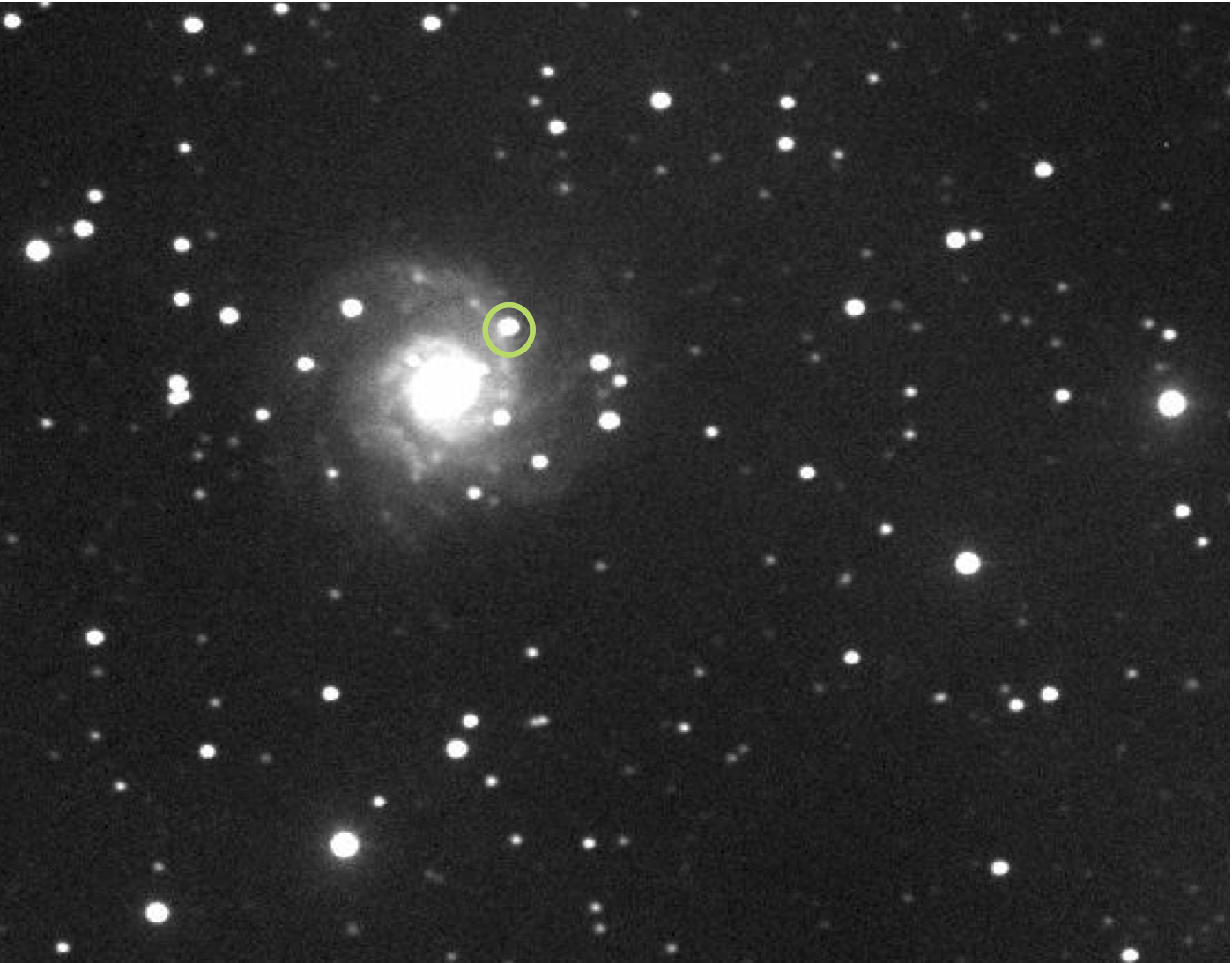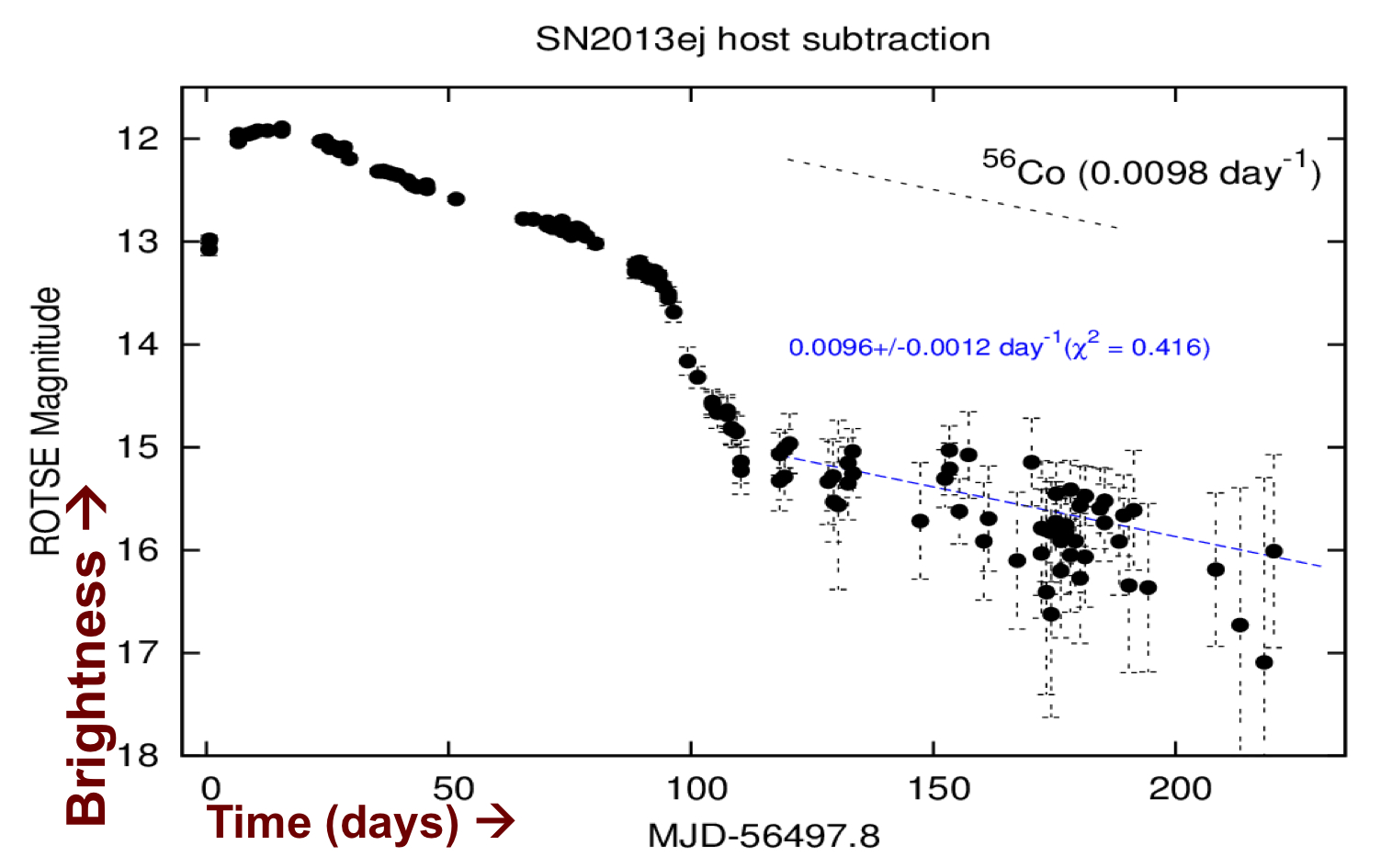Dark Energy and Robotic Astronomy
One way to look at the fundamental processes in nature is to look at the very large scale in cosmology. Dark energy is an energy or interaction that we do not yet understand, but which appears to be propelling the universe to expand at ever faster rates. The search to understand the true nature of dark energy is a focus of Kehoe’s work.
Approximately 5% of the mass-energy in our universe is in the form of luminescent matter we are familiar with. Approximately 27% is dark matter. Remarkably, most of the universe, the remaining 68%!, is a field or ‘dark’ energy that is propelling accelerating expansion of the cosmos. We cannot see dark matter or dark energy. As a result, we have not yet been able to identify by what means it operates or what its correspondence might be with the known fundamental forces: gravitation, or the electroweak or strong interactions. Current research is focused on figuring out the nature of this mysterious component.
Because dark energy only appears to impact cosmic expansion at enormous distance scales, we use a flexible, cutting edge detector in the Dark Energy Spectroscopic Instrument (DESI) to survey galaxies over the largest range of distances. We deliver 5000 galaxies per exposure to detectors that record their light spectrum in sufficient detail to see narrow emission and absorption features. Each galaxy’s light is captured by the tip of an optical fiber, positioned by a robotic arm that can point anywhere in a disk within the larger telescope field-of-view. We take these exposures every night for 5 years and anticipate spectra of an unprecedented 40 million galaxies. These spectra, which will number in the 10's of millions, will map out the distribution of matter in the universe and detect with exquisite precision the ringing echo of the Big Bang.
Galaxy Halo Occupation of Dark Matter Halos
The SMU group plays a strong and leading role in the analysis of data collected by DESI. Prof. Kehoe has served several roles on the experiment, including studies and modeling of the experiment spectroscopy, and estimation of systematic uncertainties in the clustering analysis. Most recently, the group has been working on cosmological simulations to permit the testing across multiple projected cosmologies to enable extraction of measurements of expansion parameters from the DESI Year 1 data.
Measurement of cosmic expansion using large scale structure involves the measurement of the clustering among galaxies. Distances between regions of galaxy overdensity reflect a standard cosmic ruler arising from the propagation, and then freeze out, of acoustic oscillations among baryons in the early universe. Baryons are the bulk of the visible matter of the universe, being the protons and neutrons in every atomic nucleus. Theoretical projections, however, are calculable for large cosmic volumes only for the underlying dark matter in the universe. The physical processes involving baryons mean that observed galaxy clustering does not correspond exactly to dark matter clustering. We therefore work to model the placement of galaxies in halos of dark matter that are calculable for a given cosmology, such as for a cosmology with a larger or smaller dark energy component. This is key. DESI is designed for an unprecedented level of precision in clustering measurements, in order to greatly improve constraints on cosmological parameters.
In order to reveal the cosmic matter space distribution, we are confronted with several challenges. These include the size of the volume DESI is probing, and the mass resolution required given DESI detection sensitivity, both of which require immense computational power to simulate. Adding in the non-gravitational physics involved in galaxy evolution in dark matter halos, computations become prohibitive. DESI pursues an approach that combines large, N-body simulations of dark matter and gravitational effects, with empirical or semi-empirical modeling of galaxy placement, or ‘occupation’, of dark matter halos. This allows us to harness large computing power, such as present on SMU’s high-performance computing farm ‘Maneframe 3’, while capturing details of galaxies that are best obtained from the data. The SMU group is playing a leading role in the use of these techniques for the modeling of galaxies that exhibit substantial star-formation. Kehoe’s team is focused on the emission line galaxies and quasars that probe the highest redshifts in the DESI survey. We work to develop new techniques to model these galaxies using observable quantities that are correlated with their underlying dark matter halo mass. Such quantities can then be used to model halos and subhalos where galaxies and their satellite galaxies reside. Kehoe’s team is also looking at more theoretical methods to bridge the gap between the dark matter simulations and the experimental observations.
Supernova Observation and Cosmology
Prof. Kehoe also leads a collaboration in the study of supernovae ultimately to measure cosmic expansion in the local universe. He uses data from the Robotic Optical Transient Search Experiment (ROTSE), SMU's ROTSE-IIIb robotic telescope at McDonald Observatory to discover and measure supernovae, and the Hobby-Eberly Telescope to obtain spectra for them. Currently, measurements from the cosmic microwave background are in strong disagreement with those from SNe of Type Ia concerning the expansion rate of the local universe. Kehoe and his team have focused to date on measurements of the expansion rate using core collapse SNe because these are governed by different physical processes than the Type Ia’s. This, in addition to the use of galaxy clustering already described, constitute different ways to probe the current discrepancy and establish the current expansion history. His earlier research in astrophysics centered on the search for and discovery of optical counterparts for gamma-ray bursts via the use of the fast slewing, wide-field, small aperture robotic ROTSE telescopes. He was involved in the discovery of the first prompt counterpart discovered, GRB 990123, and other searches and analyses of GRBs since.
As an adjunct to this effort, Kehoe collaborates with colleagues at Lowell Observatory and elsewhere in the R&D of devices capable of supporting infrared (IR) astronomy from the ground. This work is ultimately to develop an instrument capable of IR measurements of SNe discovered with the LSST later this decade. Kehoe also leads a multi-state collaboration of undergraduates and Dallas area high school students in the study of variable stars using the ROTSE data. The focus of this work is to study and test those types of variable stars that are instrumental in establishing rungs on the cosmic distance ladder, such as Cepheids and other pulsating variables.

